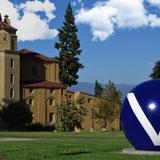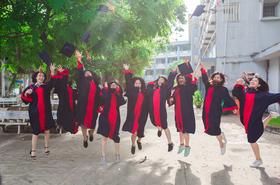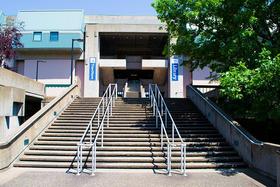- San Joaquin Valley College's (SJVC) Hesperia campus offers a variety of programs ranging from business courses that prepare students for the office to technical courses that prepare for industrial work. SJVC's business programs train them to work on the business end of a variety of fields. Our Business Administration courses train students with skills involving budgeting & finance, human resources, and business operations. These are industry non-specific skills that can be used in a number of fields. If you're interested specifically in the health care field, you should consider our Administrative Health Care Management program. This program is geared towards the preparing you to work in the business end of health care.
School Highlights
San Joaquin Valley College-Hesperia serves 637 students (100% of students are full-time).
The college's student-teacher ratio of 14:1 is lower than the state community college average of 32:1.
Minority enrollment is 87% of the student body (majority Hispanic), which is more than the state average of 77%.
Quick Facts (2025-26)
- Enrollment: 637 students
- Student-teacher ratio: 14:1
- Minority enrollment: 87%
- Source: Integrated Postsecondary Education Data System (IPEDS)
Top Rankings
San Joaquin Valley College-Hesperia ranks among the top 20% of public schools in California for:
Category
Attribute
School Resources
School Overview
The teacher population of 44 teachers has stayed relatively flat over five years.
San Joaquin Valley College-Hesperia
(CA) Community College Avg.
Carnegie Classification
Associate's Colleges: High Career & Technical-High Nontraditional
Baccalaureate/Associate's Colleges: Associate's Dominant
Institution Level
At least 2 but less than 4 years
At least 2 but less than 4 years
Institution Control
Private for-profit
Public
Total Faculty
44 staff
315 staff
Number of Programs Offered
14
12
Student Body
The student population of San Joaquin Valley College-Hesperia has grown by 24% over five years.
The student-teacher ratio of 14:1 has increased from 8:1 over five years.
The San Joaquin Valley College-Hesperia diversity score of 0.60 is less than the state average of 0.70. The school's diversity has stayed relatively flat over five years.
Total Enrollment
637 students
9,796 students
Student-Teacher Ratio
14:1
32:1
# Full-Time Students
637 students
1,259 students
# Part-Time Students
n/a
8,537 students
# Enrollment Undergraduate
637 students
242 students
# Full-Time Undergraduate Students
637 students
1,250 students
# Full-Time Graduate Students
n/a
63 students
# Part-Time Undergraduate Students
n/a
8,299 students
# Part-Time Graduate Students
n/a
10 students
Total Dormitory Capacity
n/a
121 students
% American Indian/Alaskan
1%
n/a
% Asian
1%
13%
% Hispanic
60%
47%
% Black
13%
7%
% White
13%
23%
% Hawaiian
n/a
1%
% Two or more races
3%
5%
% Non Resident races
n/a
1%
% Unknown races
8%
3%
Diversity Score
0.60
0.70
College Completion Rate (Students who graduate in less than 4 years)
48%
42%
College Completion Rate (Students who graduate in 4 years or more than 4 years)
n/a
43%
Average Graduate Earnings (10 Years)
$30,900
$34,700
Tuition and Acceptance Rate
% Students Receiving Some Financial Aid
100%
85%
Median Debt for Graduates
$19,180
$9,500
Median Debt for Dropouts
$8,750
$4,750
Acceptance Rate
n/a
93%
Source: 2024 (or latest year available) Integrated Postsecondary Education Data System (IPEDS) , School Administrators
Frequently Asked Questions
What schools are San Joaquin Valley College-Hesperia often compared to?
San Joaquin Valley College-Hesperiais often viewed alongside schools like Victor Valley College by visitors of our site.
What is San Joaquin Valley College-Hesperia's ranking?
San Joaquin Valley College-Hesperia ranks among the top 20% of community college in California for: Percent of students receiving financial aid.
Recent Articles

How to Transfer from Community College to a Four-Year University in 2025
A step-by-step guide for community college students transferring to a four-year university in 2025 — updated strategies, data and expert insights.

Scholarships for Community College Students 2025
Explore updated scholarship programs, tuition data, and expert strategies for community college students in 2025.

The Rise of Technical and Vocational Training in 2025
Explore the 2025 surge in technical and vocational training—enrollment, policy, costs, and why this path is gaining ground for students and parents.






